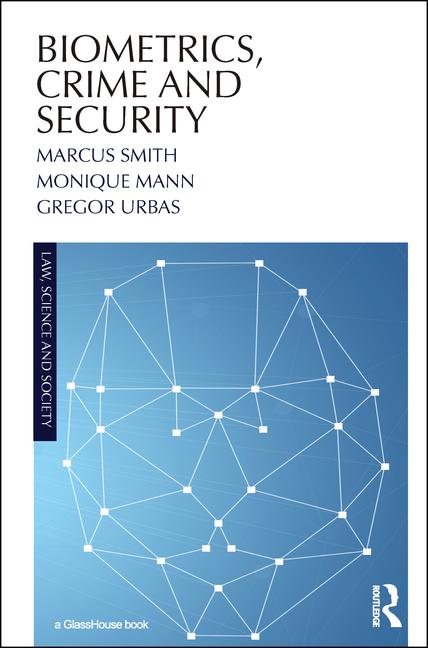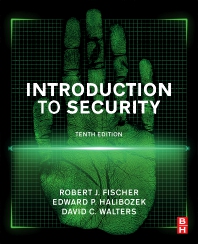

It’s called crime prevention through environmental design or CPTED. It’s been around as a concept for almost 40 years. But since the 9/11 tragedy, there has been renewed interest by chief security officers, architects and law enforcement in the guidelines and real-world applications of CPTED concepts. A new book, “21st Century Security and CPTED,” edited by Randall Atlas and published by CRC Press, updates best practices as applied to today’s world of threats including workplace violence, terrorism and street crime.
This exclusive Enterprise Solutions report from
Security Magazine comes from that book and centers on situational crime
prevention.
Situational crime
prevention was developed in the late 1970s and early 1980s in .
Although it was influenced by C. Ray Jeffery’s book “Crime Prevention Through
Environmental Design” in 1971, and Oscar Newman’s work on Defensible Space, new
research only contributed to the expansion of situational crime prevention, not
to its initial inception. CPTED and the Defensible Space theory were more
focused on the design of buildings and places, whereas situational crime
prevention sought out to reduce crime opportunities in all behavioral contexts.

REDUCING THE OPPORTUNITY
Situational prevention is comprised of opportunity-reducing measures that are directed at very specific forms of crime. It is involved in the management, design, or manipulation of the immediate environment in as systematic and permanent way as possible so to increase the effort and risks of crime and reduce the rewards as perceived by a wide range of offenders.
Research caused a
shift in the focus of practical crime control policy from attention on the
offender and his or her personality or background, to the general influences of
the surrounding environment that contribute to criminal behavior by creating
opportunities that may not otherwise exist. Clarke (1992) contributed to
practical situational crime prevention by developing crime prevention
techniques that can generally be applied to almost any situation (see Table
6.1).
Situational crime prevention has been successfully applied in
multifamily residential low-income housing. However, experienced security
practitioners can readily apply these techniques to commercial, industrial and
governmental facilities. Situational crime prevention utilizes rational choice
theory as its theoretical framework, and follows a methodology that analyzes
the opportunities for a specific crime to occur in a particular situation, and
prescribes solutions targeted at removing those criminal opportunities.
Rational choice theory is based on a model of behavior that the offender weighs
the costs, risks, and rewards of committing a specific crime at a particular
time and place.

DESIGN IT INTO FACILITIES
Situational crime prevention measures are effective because
they are practical, cost effective, and permanent alterations to the physical
environment that are designed to fit specific types of crimes. Situational
crime prevention uses five approaches:
- Increasing the effort needed to commit crime.
- Increasing the risks associated with crime.
- Reducing the rewards of crime.
- Reduce provocations.
- Removing the excuses for illegal behavior by inducing shame or guilt.
Increasing the effort for crime is accomplished by the strategies of:
- Target hardening measures increase the effort by creating physical barriers such as locks, screens, steel doors, fences, and shatterproof glass.
- Access control measures increase the effort by limiting access to the vulnerable areas.
- Removing or deflecting offenders increases the effort by displacing offenders outside the target area.
- Controlling the facilitators of crime (limiting access to the tools and devices that criminals use or need to commit a crime, that is, removing access to cans of spray paint, collect call only public telephones, shopping carts, towing abandoned cars, weapon screening policies, etc.).
Increasing the perceived risks associated with crime, so there is increased risk of the criminal being identified and/or caught in the act, is accomplished with the following strategies:
- Entry and exit screening, which increases risk by monitoring who enters an area and what and who is leaving the property.
- Formal surveillance by CCTV and security officers.
- Surveillance by employees, concierge, parking attendants, security guard stations.
- Natural surveillance with window placement, external lighting, limiting blind spots, cutting hedges.
Reducing anticipated rewards is accomplished with strategies of:
- Target removal, which eliminates the incentive for crime. A no-cash policy removes the threat of robbery, other target removal strategies include direct deposit checks, removable car radios, cashless transactions.
- Identifying the property of value. Identifying stolen property makes it more difficult for criminals to sell and easier to return to the owner.
- Reducing temptation (examples such as gender neutral listing, rapid repair of vandalism and graffiti).
- Denying the benefits of gain (plantings on potential graffiti walls, ink explosion kits in bank money bags, computer PINs for credit cards and car radios, rendering them useless if stolen or tampered with).
- Reduce frustrations and stress with muted lighting and soothing music.
- Avoid disputes by having fixed rates or fares, or separating rival soccer or football fans.
- Reduce emotional arousal by not tolerating racial slurs, enforcing civilities, limited access to pornography.
- Neutralize peer pressure with anti-drug and anti-drinking programs to counter “coolness.”
- Discourage imitation by rapid repair of vandalism and not publicizing incidents.
- Rule and boundary setting. This refers to the rules and regulations that all organizations need to impose on their employees’ bad conduct. Making rules explicitly removes the ambiguity that permits legitimate persons to commit offenses and excuse their crimes with claims of ignorance or misunderstanding.
- Stimulating conscience. Policies that openly declare against shoplifting, speeding, smoking, drug use, littering, and so on.
- Controlling inhibitors. Examples include drug-free zones, weapon-free policy, drinking age laws, V-chip for video stations, age restriction to pornography sites.
- Facilitating compliance. If the desired behavior or outcome is made easier than the illegal or illegitimate behavior, most people will choose to comply. Examples include designated trash sites to stop illegal dumping, or public bathrooms to prevent inappropriate bathroom activities, convenient trash bins for litter.

APPLICATIONS OF SITUATIONAL CPTED
Applying CPTED requires a knowledge and understanding of basic crime prevention theory and practice. There are a number of operating assumptions for crime prevention officers that are relevant to security personnel and others engaged in loss and crime prevention planning and implementation, which are also relevant to CPTED:
- Potential victims and those responsible for their safety must be assisted to take informed actions to reduce their vulnerability to crime.
- The actions potential victims can take to prevent crime are limited by the control they can exert over their environment.
- Focus must be given to the environment of the potential victim rather than that of the potential criminal.
- Crime prevention is a practical vs. moralistic approach to reducing criminal motivation by reducing the opportunities to commit crime.
- Punishment and rehabilitation capabilities of courts and prisons, police apprehension, and so on, can increase the risk perceived by criminals and have a significant, but secondary, role in criminal opportunity reduction.
- Law enforcement agencies have a primary role in the reduction of crime by providing crime prevention education, guidance, and information to the public, institutions, and other community organizations.
- Crime prevention can be both a cause and effect of efforts to revitalize urban and rural communities.
- Crime prevention knowledge is continually developing and is interdisciplinary in nature; thus, there must be a continual analysis of successful practices and emerging technologies and the sharing of this information among practitioners.
Crime prevention strategies must remain flexible and creative to be effective. Success in one situation does not necessarily mean that success can be transferred to another similar set of circumstances without proper consideration to cultural, environmental, and other factors.
Crime Prevention through Environmental Design (CPTED), and an associated program called Situational Crime Prevention, works. Here are two examples.
FORT LAUDERDALE, FLORIDA
From 1987 to 1990, , led by
Sgt. Gene Farmer, enacted a strict code enforcement policy to remove crime
facilitators and to set boundaries against unlawful activities. The city
modified its codes to allow for more effective enforcement and to reduce crime
opportunity. Codes were modified to authorize the police to arrest for
misdemeanor or municipal ordinance violations. State laws
and county ordinances were incorporated into the municipal ordinance, reducing
confusion over prevailing laws and rules. Buildings or other properties deemed
to be “unsafe structures” were to be demolished. Property owners were held
responsible for activities occurring on their properties. The city mailed
letters to those property owners where drugs were sold.
To enforce the codes, a five-person code team composed of a police officer, a building code inspector, a fire code inspector, a tax collector and an architect/design professional completed the following tasks during a four-year period:
- Inspected more than 1,712 dwelling units.
- Investigated more than 4,500 complaints.
- Cited more than 25,000 code violations.
- Secured more than 400 units.
- Demolished 110 drug houses.
- Generated more than $500,000 in fines collected between 1987 and 1990.
These measures led to the following improvements:
- 56 percent decrease in drug offenses
- 34 percent decrease in homicides
- 23 percent decrease in police workload
CINCINNATI, OHIO
The Cincinnati Metropolitan Housing Authority implemented two crime prevention measures, which could prove useful for any metropolitan public location. These simple measures were designed to remove inducements for crime and reduce the rewards of crime. To remove inducements for crime, the Cincinnati Metropolitan Housing Authority (CMHA) purchased additional garbage cans to be distributed throughout their properties, and purchased “garbage vacuums” to drive through its housing developments, and vacuum litter much faster than it could be collected by hand. Adding trash cans encouraged their use; quick cleanup with the commercial vacuums reinforced the Housing Authority goal of a clean site. Removing the litter also reduced or eliminated the hiding places for drug stashes, and reduced the stigma of poor appearance.
The CMHA rapid graffiti removal policy reduced the rewards of
crime by minimizing the amount of time that graffiti was visible. Gangs often
use graffiti as a territorial marker or as a road sign for drug markets. If
graffiti is removed as soon as it is discovered, its benefits decrease.
Graffiti removal also eliminates the opportunity for rival gangs to leave their
graffiti correspondence to each other.
SUMMARY
Situational crime prevention consists of a set of opportunity reducing measures directed at the potential offender: increase the effort, increase the risks, reduce the rewards, reduce the provocations, and remove the excuses for criminal behavior. CPTED differs slightly, with its focus on altering the physical environment to reduce criminal opportunities. The major difference between these two crime prevention methods is the scope and depth of devising and applying crime prevention measures. Situational crime prevention falls within the theoretical framework of criminal opportunity theories, such as rational choice, routine activities, and environmental criminology.
CPTED draws on the multidisciplinary theoretical background from
the social and physical sciences that serve as the basis for CPTED’s
environmental alterations. Newman’s work in defensible space and Crowe’s first
generation work in CPTED have paved the way for the next generation of CPTED
that incorporates elements of behavioral psychology and sociology of human
behavior with the architectural modifications needed to make a safe
environment.
Although situational crime prevention and CPTED differ in terms
of their theoretical base, they can be used together and even compliment each
other. CPTED and situational crime prevention are valuable tools for security
directors and law enforcement.
Police officers,
security directors and design professionals typically want standards,
guidelines and directives to tell them what to do in different environments in
order to respond to the threats for security. It is important to remember that
before a standard is made, the theory and practice must withstand vigorous
research and the test of time to prove its worthiness. There is value in
understanding the “why” of crime, not just responding to each new threat after
the fact. CPTED and Situational Crime Prevention are interdisciplinary and
holistic theoretical-based approaches to understanding the basis for criminal
and terrorism behavior. The root of the problem can never be solved unless we
thoroughly understand the subtleties of the relationship between environment
and behavior.
It is important to distinguish that CPTED is not always enough to
stop crime. If CPTED measures are employed alone, they can sometimes create
more problems than they solve in the community, neighborhood, or project in
which they are implemented. Certain CPTED or security measures may create or
exacerbate tension between groups in the community because certain people or
groups may not feel they are benefiting from the correct crime prevention
measures. Secondly, persistent or motivated offenders or youth may dedicate
time and unlimited energy to figuring out how to overcome the CPTED measures
resulting in corrections that end up being fortress-like target hardening.
Finally, CPTED measures do not address the social and economic problems of the
community, neighborhood, society, or building project. The solution is to
integrate a CPTED program with additional initiatives, and collaborate building
processes to make the community or neighborhood whole.
About the Sources
Randy Atlas, Ph.D., AIA, CPP, ’s only architect and criminologist, is a world recognized leader in CPTED. He is president of Counter Terror Design, Inc. and vice president of Atlas Safety & Security Design, Inc., in Severin Sorensen, CPP, is a subject matter expert on CPTED and situational crime prevention. Sorensen is president and CEO of Sikyur.com and an advisor to chief security officers and security professionals. The authors wish to acknowledge John Hayes for his contribution as well as Ellen Walsh, Marina Myhre and Ronald Clarke, who contributed to the curriculum for the U.S. Department of Urban Development. The chart in this article is from Clarke.
About the Book
21st Century Security and CPTED, ISBN: 1420068075, in hardcover is $89.95 and runs 576 pages. Order from CRC Press by calling toll-free (800) 272-7737, by e-mail orders@crcpress.com or visit the CRC Web site at: http://www.crcpress.com








